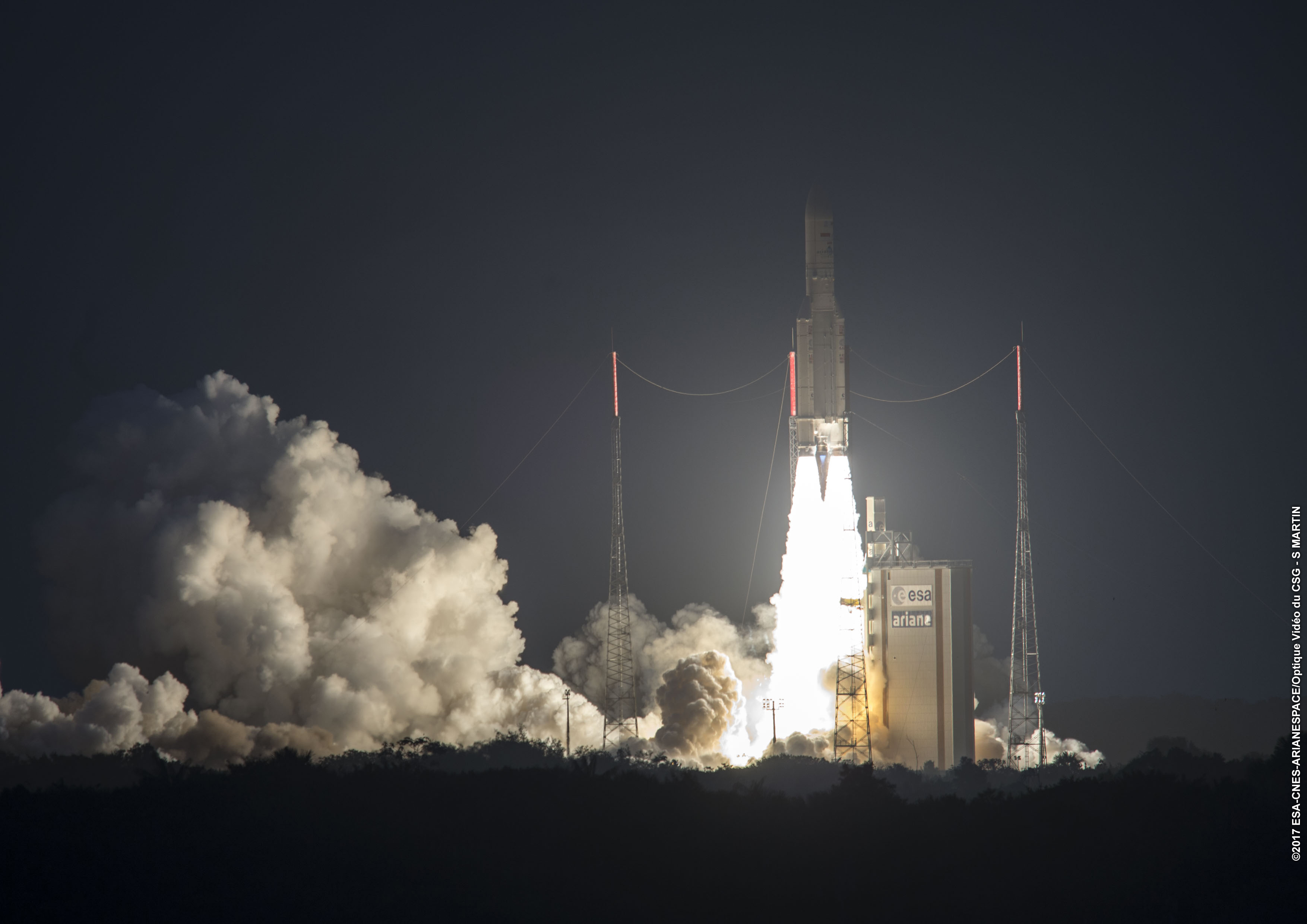Heavy-Lift Ariane 5 Rocket Launches 2 Telecom Satellites

WASHINGTON — European launch provider Arianespace completed the first of seven planned launches of its heavy-lift Ariane 5 rocket this year, delivering two telecommunications satellites into geostationary transfer orbit.
The rocket lifted off from the European spaceport in Kourou, French Guiana, on Tuesday (Feb. 14) at 4:39 p.m. EST (2139 GMT) with the Sky Brasil-1/Intelsat 32e and Telkom-3S telecommunications satellites.
Sky Brasil-1/Intelsat-32e, built by Airbus Defence and Space in Toulouse, France, is a 13,200-lb. (6,000 kilograms) Ku-band satellite with broadcast capacity for DirecTV Latin America and high-throughput capacity for Intelsat-supported mobility network services. The Intelsat payload overlays capacity with that of Intelsat 29e over the Caribbean and North Atlantic.
Telkom-3S, a product of Thales Alenia Space built in Toulouse and Cannes, France, is a replacement for Telkom-3, a satellite lost in August 2012 due to a Proton rocket failure. The 7,800-lb. (3,550 kg)Telkom-3S satellite carries 42 transponders: 24 in C-band, eight with extended C-band and 10 in Ku-band, to provide television and mobile communications for Indonesia and Southeast Asia.
The Ariane 5 mission is the second launch Arianespace has completed this year, preceded by the Jan. 27 Soyuz launch of Hispasat-36W-1. The launch provider is aiming for 12 missions in 2017 — two Soyuz, three Vega and seven Ariane 5.
Intelsat has one more satellite launching this year. Intelsat 35e, another EpicNG-series high-throughput satellite, is planned for a SpaceX Falcon 9 flight in the next few months. Telkom Indonesia has another satellite, Telkom-4, on order from California-based Space Systems Loral, with a launch targeted for 2018.
Arianespace's next mission is the Vega launch of Sentinel-2B, the second spacecraft in a two-satellite Earth-observation constellation for the European Commission's Copernicus program. Following the early March launch, Sentinel-2B will join Sentinel-2A, which launched in June 2015, and together they will cover the planet once every five days.
Breaking space news, the latest updates on rocket launches, skywatching events and more!
This story was provided by SpaceNews, dedicated to covering all aspects of the space industry.
Join our Space Forums to keep talking space on the latest missions, night sky and more! And if you have a news tip, correction or comment, let us know at: community@space.com.
Caleb Henry is a senior analyst for Quilty Analytics and a former staff writer for the space industry publication SpaceNews. From 2016 to 2020, Caleb covered the global satellite industry for SpaceNews, chronicling everything from launches, spacecraft manufacturing and ground infrastructure. Caleb's work has also appeared in NewSpace Global and Access Intelligence. He earned a bachelor's degree in political science with a minor in astronomy from Grove City College.

